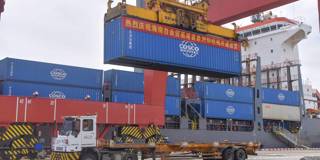The pandemic has shown that supply chains will need to be rethought, with more emphasis put on supplier diversification, domestic production, and stockpiling. The challenge will be to strike a balance ensuring that a targeted and limited industrial policy does not become a cover for protectionism.
NEW YORK – Two adages come to mind as I write this: “Don’t put all your eggs in one basket,” and “A chain is only as strong as its weakest link.” Taken together, the two maxims sum up current anxieties about supply chains.
Almost anything and everything that is produced in the world nowadays may be the result of a supply chain: a series of steps in which raw materials and components are produced, assembled, and then marketed around a single country or the world. Some products can require thousands of steps that include hundreds of businesses in dozens of states or countries.
Supply chains were largely constructed and maintained with little thought given to their resilience. Keeping costs down was paramount. This meant often depending on a single low-cost supplier or producer and limiting inventory size. “Just in time” was the concept that reflected the desire to minimize the gap between when an item was produced or purchased, and when it was sold.

NEW YORK – Two adages come to mind as I write this: “Don’t put all your eggs in one basket,” and “A chain is only as strong as its weakest link.” Taken together, the two maxims sum up current anxieties about supply chains.
Almost anything and everything that is produced in the world nowadays may be the result of a supply chain: a series of steps in which raw materials and components are produced, assembled, and then marketed around a single country or the world. Some products can require thousands of steps that include hundreds of businesses in dozens of states or countries.
Supply chains were largely constructed and maintained with little thought given to their resilience. Keeping costs down was paramount. This meant often depending on a single low-cost supplier or producer and limiting inventory size. “Just in time” was the concept that reflected the desire to minimize the gap between when an item was produced or purchased, and when it was sold.